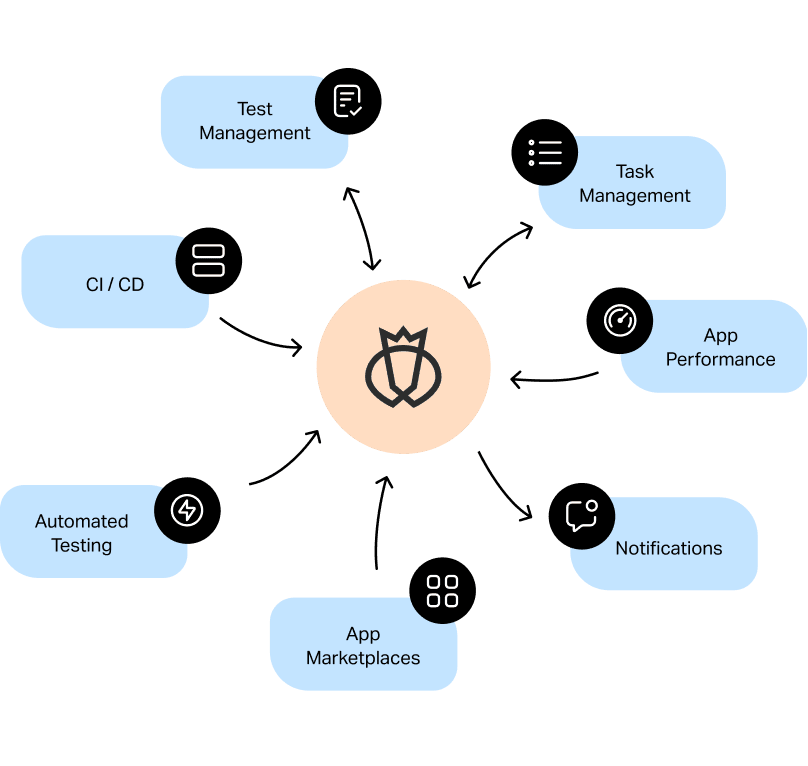How Automation Testing Transforms Quality Assurance Processes
From Handbook to Automated Screening: A Comprehensive Guide to Transitioning Efficiently and Effectively
In the realm of software testing, the change from manual to automated procedures has actually become an increasingly vital change for companies seeking to boost performance and accuracy in their testing practices. The journey from manual to automated screening is not without its difficulties, but when approached purposefully and with a clear strategy in mind, the advantages can be substantial.
Benefits of Automated Examining
Automated testing uses countless benefits, enhancing efficiency and accuracy in software application growth processes. Automated examinations can be run concurrently on numerous devices and operating systems, drastically speeding up the testing phase compared to hand-operated screening.
Additionally, automated testing guarantees a greater level of accuracy in discovering problems. Since automated tests comply with predefined manuscripts, human mistake is lessened, resulting in more trusted examination outcomes. Consistency in testing is additionally enhanced, as automated examinations carry out the very same actions precisely each time they are run. This consistency is critical in making sure that all performances of the software application are thoroughly examined, minimizing the probability of undiscovered bugs sliding via to manufacturing.
Selecting the Right Devices

To start with, analyze your objectives and needs. Comprehend the scope of your job, the technologies included, and the skill set of your group. This analysis will help you figure out the capabilities and functions you call for in your screening tools.
Second of all, think about the compatibility of the tools with your existing processes and systems. Seamless combination with your existing software growth lifecycle is vital to make sure a smooth change to automation.
In addition, assess the scalability and versatility of the devices. As your testing needs progress, the devices ought to have the ability to adapt and accommodate adjustments effectively.
Lastly, consider the support and area around the devices. Robust assistance and an active user area can offer valuable sources and assistance when applying automated screening. By very carefully considering these facets, you can choose the right devices that line up with your demands and set the phase for an effective shift to automated screening.
Creating Efficient Test Manuscripts

When crafting test scripts, it is vital to take into consideration the particular needs of the software application being checked and guarantee that the scripts resolve all essential performances. Clear and detailed naming conventions for examination scripts and examination cases can boost readability and maintainability. Additionally, including error handling mechanisms within the examination scripts can help in recognizing and addressing problems without delay.
Furthermore, organizing examination scripts right into modular elements can boost reusability and scalability, lowering redundancy and boosting effectiveness in examination manuscript maintenance. Regular evaluations and updates to check manuscripts are critical to equal developing software application needs and performances. By complying with these concepts, testers can produce durable and efficient test scripts that add substantially to the success of automated screening processes.
Integrating Automation Into Workflows
By flawlessly incorporating automated screening devices like Selenium or Appium right into the software application growth lifecycle, teams can attain faster responses on code modifications, leading to quicker insect discovery and resolution. This assimilation enables for constant testing throughout the growth procedure, making certain that any type of problems are determined early on, resulting in greater software high quality. Correct integration of automation tools requires collaboration between growth, screening, and operations groups to establish a unified workflow that maximizes effectiveness and performance in supplying high-quality software application items.
Making Sure a Smooth Transition
Effectively transitioning to automated testing includes meticulous planning and cautious implementation to maximize and reduce interruptions performance in the software program growth process - automation testing. To ensure a smooth shift, browse this site it is vital to start by performing a comprehensive assessment of the existing testing procedures and recognizing locations where automation can bring one of the most considerable advantages. Engaging with all stakeholders beforehand find out while doing so, including programmers, testers, and job managers, is vital for gathering support and buy-in for the automation campaign
Communication is crucial throughout this shift phase. Clear interaction of the objectives, benefits, and assumptions of automated screening helps to take care of any kind of resistance or concerns that might arise. Additionally, supplying appropriate training and sources for group members to upskill in automation tools and strategies is important for making sure an effective shift.

Conclusion
Finally, transitioning from guidebook to automated screening uses various benefits, including raised performance and dependability. By picking the proper devices, writing effective test manuscripts, and incorporating automation seamlessly into process, organizations can make certain a successful and smooth shift. It is vital to embrace automation as a valuable property in software program testing procedures to improve total quality and productivity.
In the world of software screening, the change from guidebook to automated procedures has actually come to be a significantly important shift for companies looking for to boost effectiveness and precision in their screening practices. Automated examinations can be run at the same time on numerous tools and operating systems, significantly speeding up the testing stage compared to hand-operated testing. Uniformity in testing is additionally enhanced, as automated examinations perform the same steps exactly visit the site each time they are run.To make sure the successful application of chosen testing tools, the development of reliable examination manuscripts plays a crucial role in verifying the performance and performance of automated procedures - automation testing. By following these concepts, testers can create reliable and durable test scripts that add dramatically to the success of automated testing processes